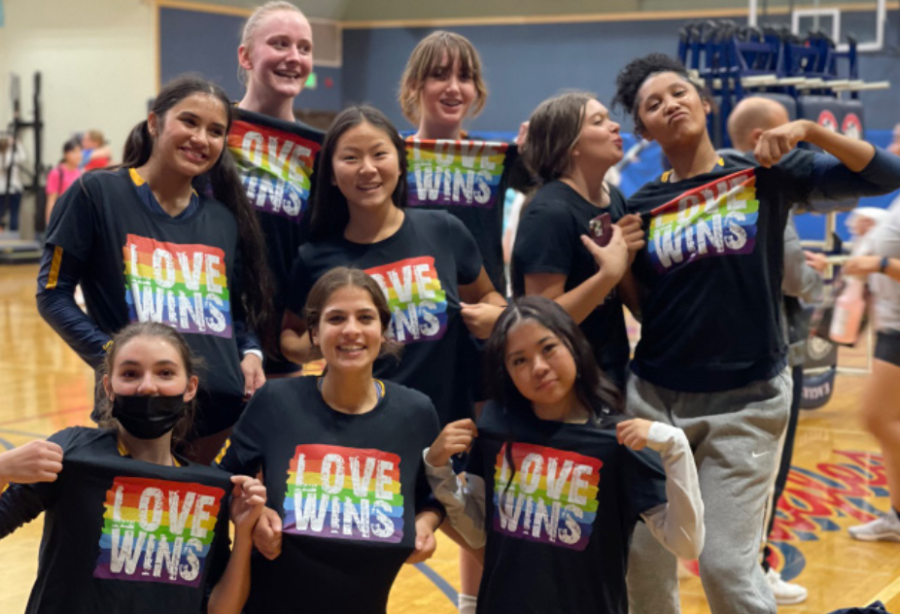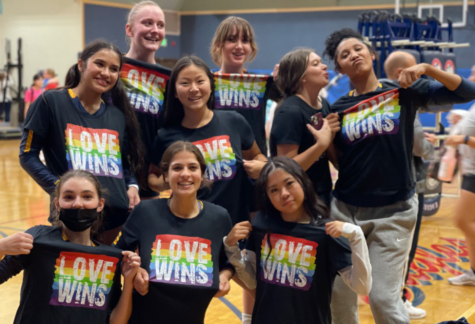Surprise Policy Change Sees Hair Dye Ban Lifted
photo courtesy of Sofia Guerra
The new policy allowing dyed hair applies only to Upper School students.
October 20, 202251 Views
In a surprise modification to the Student Handbook, Annie Wright Schools’ (AWS) administration has quietly paved the way for Upper School’s students to “have more flexibility” when it comes to dying their hair. This change comes after years of controversy surrounding a school-wide ban on unnaturally dyed hair.
Why the change was made
AWS Head of Schools, Jake Guadnola, explained that the idea for the change came from conversations regarding uniform at AWS. The 2022-23 school year is the first to feature a new single uniform for all upper school students after a collaborative effort between the administration and student governments to promote inclusivity and freedom of expression in the uniform. Guadnola said that in these conversations, questions were raised about “how far the uniform extends.”
“The idea of being a uniform school is that students can be celebrated for who they are, right, what they do, what they say, not how they dress or how they look,” continued Guadnola. However, he added that sometimes the way students present themselves does still feel meaningful: “We recognize [uniform] doesn’t feel 100% true either, the way I keep my hair, what my style is, what sort of jewelry I wear, these are all ways in which we can express our individuality.” The main question Guadnola came to was: “how can we be both a school that honors this connection to the past through uniform—the celebration of the individual separate of their appearance—and at the same time say that we honor and recognize individuality?”
Guadnola said that another consideration in these discussions was age and maturity level of students. “Complicating it further is this idea of social pressures that kids can either intentionally or unintentionally apply to themselves…as kids are younger, they are more susceptible to some of those pressures.” He said that the Senior Leadership Team (SLT) discussed where an appropriate level of maturity is present for students to make their own decisions on how they present themselves. “Where we ultimately landed is that [agency] felt applicable and appropriate at the high school level. So, the upper school students we feel have moved into a space where they can both make that decision on their own or with their family, however works for them, and be strong enough to be able to say that they can manage the ‘Oh Sebastian has dyed his hair, that doesn’t mean I have to dye my hair.’” However, Guadnola stressed that drawing the line at high school “doesn’t mean to discredit the maturity of middle schoolers.” He continued, “I think there are many who can [manage these decisions], but we just had to draw the line somewhere. And so, acknowledging that [it was arbitrary] we drew the line at the upper school level.”
Guadnola said the main reason they concluded that a change to the policy was necessary came down to dress uniform. “We [have] moved away from dress uniform in both the lower and middle [schools], but we keep it in the upper [schools]. And so we factored in this idea of as kids get older, there is a recognition that your attire matters, the way you present yourself in a certain situation sends messages to the other people around you, whether you want it or not.” He admitted, “I know there can be a lot of debate over whether that’s fair or not fair, but in my opinion that’s just the truth.” Guadnola argued that in acknowledging this “maturity and understanding” in high school students, there is also space for the administration to allow agency when it comes to hair color. He said although the SLT went “round and round on it,” they ultimately decided that the policy change was due.
Hidden in the handbook?
Another aspect of note in the policy change is that no formal announcement of the change was made. Guadnola said the reason for this comes down to the gravity of the issue. “It’s up to [the students], it’s not a huge deal. We just made a policy change, we make all sorts of policy changes we don’t announce.” Additionally, he mentioned that despite the fact that the previous policy prohibited dyed hair, this rule was largely unenforced. “We had language in there, I don’t know if it still exists, that talked about whether or not things were deemed distracting, right? The truth is we never really called anybody on anything, I mean, it just didn’t happen.” Guadnola continued, “In my mind, it’s not really that significant because we’ve had kids that—on or off—have done all sorts of different things with their appearance.” He concluded, “so you know, we [made] a change, we just changed it in the handbook, and people pick up on it, they don’t pick up on it, it’s up to them,” noting, “students certainly seem to be reading the uniform section of the student handbook. It wasn’t like it was this thing that’s in the dark. I can’t tell you—it’s probably one of the most widely read sections of the student handbook, from my experience.”
Hair color history
“There didn’t use to be a policy,” said Guadnola. He believes the root of it came from a controversy in a previous Green Tie class. “I remember, there were a couple kids who dyed their hair bright green and bright pink right before May Day, it might’ve even been May Day morning, and that raised all sorts of controversy.” He said the consequences of this action came quickly, “immediately after that, the policy was put in place that you couldn’t [dye your hair]. And students got really irate, it was at the end of the year, but it was a really big deal.”
Guadnola said the next fall saw management and enforcement of the policy, but after that, there wasn’t a lot of blowback over the isse. He said, “there wasn’t really [talk of it], I was really surprised, every now and then we’d get a question about it, but by and large—there was a lot of discussion when that thing went into place, there were people really frustrated that first semester, and then it kinda just subsided.” Guadnola admitted that issues with the policy have been and are raised periodically, but to him it doesn’t feel like anything big.
Ultimately, at the bottom of page 22 of the Annie Wright Schools Handbook, the wording has been changed. What that means for students, however, is entirely up to them.










